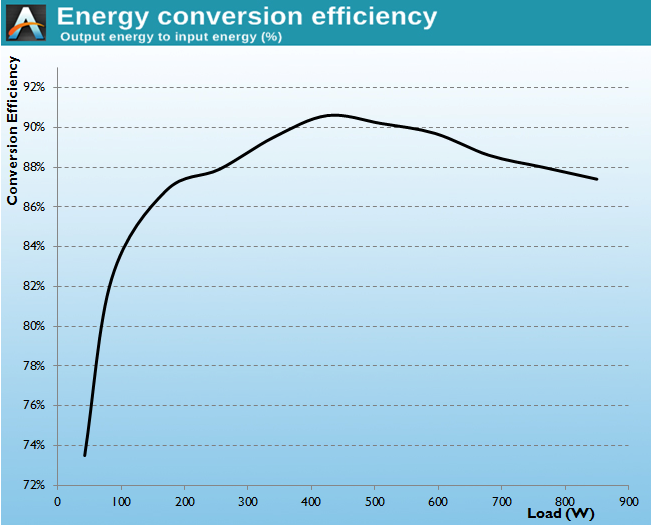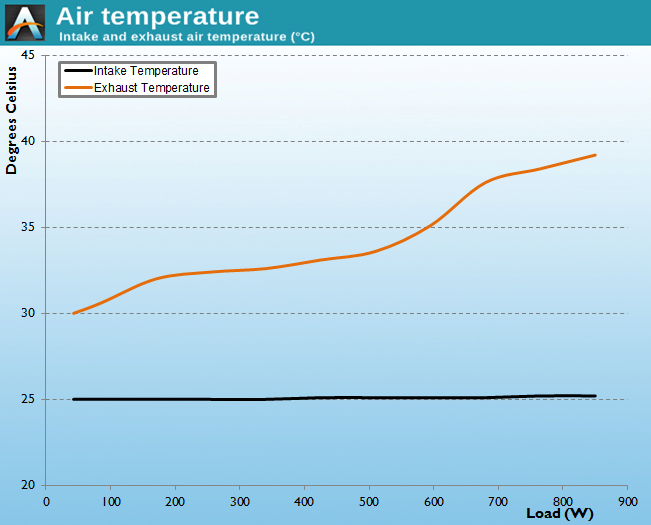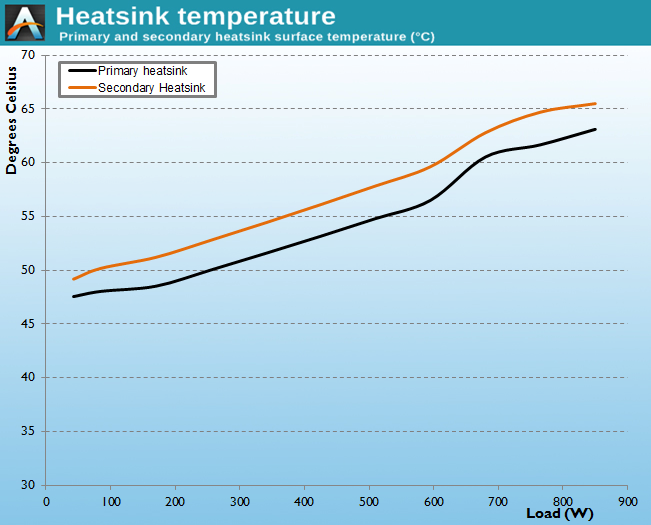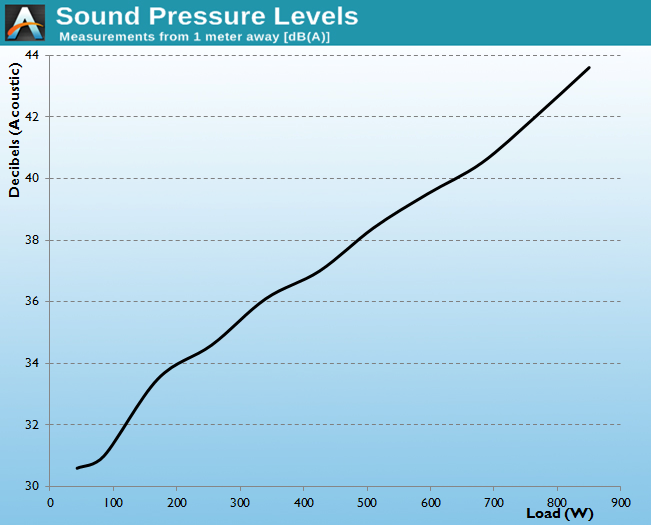be quiet! Power Zone 850W CM Power Supply Review
by E. Fylladitakis on August 14, 2014 6:00 AM EST- Posted in
- Cases/Cooling/PSUs
- PSUs
- be quiet!
- FSP
- Fortron/Source
Cold Test Results
For the testing of PSUs, we use high precision electronic loads with a maximum power draw of 2700 Watts, a Rigol DS5042M 40MHz oscilloscope, an Extech 380803 power analyzer, two high precision UNI-T UT-325 digital thermometers, an Extech HD600 SPL meter, a self-designed hotbox, and various other bits and parts. For a thorough explanation of our testing methodology and more details on our equipment, please refer to our How We Test PSUs - 2014 Pipeline post.
The performance of the Power Zone 850W CM at room temperature is surprisingly high. The average conversion efficiency of the power supply within the nominal load range (20% to 100%) is 88.7%, with the maximum being 90.6% efficiency at half load. As a matter of fact, this product should easily meet the 80 Plus Silver efficiency certification. We can only assume that it received an 80 Plus Bronze certification because of an old, now defunct revision, or because the efficiency drops dramatically if the unit is powered from a 110 VAC source; however, both of these scenarios are assumptions on our part. With a load of only 40 Watts, the efficiency of the Power Zone 850W CM drops down to 73.5%, which is a fairly good result considering the class and design of this unit.
The cooling system of the Power Zone 850W CM is a bit unusual, considering the company name. The unit runs cool in general, with below average component temperatures for a power supply of this output, but it relies on the powerful cooling fan. From the moment that the load goes above 12-15% of the unit's capacity, the fan starts increasing its speed in a near-linear fashion. Although this does keep the unit cool, this is rather strange behavior for a unit from a company that takes pride on their low-noise solutions.
The result is that noise from the Power Zone 850W is never what we would really call "quiet". It's clear that this particular model has been designed to be more of a high-performance "gaming" PSU rather than a low-noise product. When you compare it with other PSUs like the EVGA SuperNova 850W G2, the noise and overall performance become even more questionable.















20 Comments
View All Comments
inighthawki - Thursday, August 14, 2014 - link
Sorry, that should read:"whether or not to get a second *GPU*"
Daniel Egger - Thursday, August 14, 2014 - link
> 2) PSUs generally get their best efficiency while running at 50-60% load. So having a 750W PSU to power a 400W system provides the best efficiency. (Granted I realize for many this is a silly point, since the extra cost of the PSU itself generally will outweigh any cost savings, but maybe they like to be green, or just have the money)Your reasoning is flawed because a typical (even gamers) PC spends considerable amounts of time *way* below the maximum power rating where you'll immediately loose any advantage you would gain from having the maximum rating at the maximum efficiency point big time, especially if your system idles a lot and drops below the miraculous 20% mark.
But with a 400W system a few percent efficiency more or less really don't matter any more as there's definitely no greenness to be had anymore...
DanNeely - Thursday, August 14, 2014 - link
As a distributed computing (Boinc, primarily Einstein at home) participant, I suspect my system probably spends <95% of its operating time at full load; and my average load while gaming is probably below the non gaming average because the threshold where I have to GPU compute while playing to keep good FPS is lower than what's needed to heavily load the GPU. (Games and Compute are a lot worse at sharing GPU resources than their CPU equivalents.)inighthawki - Thursday, August 14, 2014 - link
Fair point.Flunk - Thursday, August 14, 2014 - link
It looks like they spent a good potion of the budget on appearance. Middling electronics and a loud fan don't impress me for the price. Some low end units are built better than this and I personally don't care what power supplies look like, in most cases you don't even see it.Essence_of_War - Thursday, August 14, 2014 - link
Sidenote on be Quiet's fans, is there some specific reason that they seem to use non-standard fan sizes? This unit uses a 135mm fan, and their HSFs are made for 130/135mm fans as well.DanNeely - Thursday, August 14, 2014 - link
For the PSU, it's the biggest size that will fit. Meaning that all else equal, it gives the most air movement for the least noise. On the heat sinks I'm not sure why they wouldn't just edge up to 140mm unless it's to exploit volume discounts from their supplier by using the same fans for both products.piroroadkill - Thursday, August 14, 2014 - link
I thought the 135mm fan in PSU thing was because Zalman has a patent on 140mm fans in power supplies.piroroadkill - Thursday, August 14, 2014 - link
Actually, I'm going to correct myself, because I don't think it's Zalman. I posted the same thing in 2011, and someone said it was HEC that has the patent.DanNeely - Thursday, August 14, 2014 - link
*BOGGLE*That's even more appalling than the "standard PC architecture feature on a smartphone" patents because I can't imagine any way that "use the biggest fan that will fit" could be obfuscated into something that a kindergartener, never mind a patent office reviewer, couldn't realize was trivial.